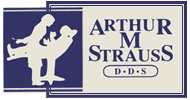Articles - Your Health Magazine, July 2008
Introduction to a New Science
Oral Systemic Balance® (OSB) Therapy helps people with snoring and obstructive sleep apnea (OSA) along with a wide variety of other symptoms including “TMJ” and many other pain conditions and agitation states. It is based on major scientific advances in what we know about how the body keeps the airway open and the consequences of this system breaking down.
The magnitude of the impact of this therapy on the body can be understood when we realize that keeping the throat open is the most important body function. The throat is kept open by a variety of body compensations. The most basic of these is the underlying tightness or tone of the tongue muscle when we are fully relaxed which determines how the tongue sits in the mouth, as well as the throat. There must be enough tension in the tongue muscle to hold the tongue forward so that it does not fall back and block the throat airway when we are relaxed. This has important implications in the cause of snoring, OSA, and other conditions.
All the air you breathe goes through the throat, over the back of the tongue; this space is technically called the pharynx. Any disturbance in the normal muscle reflex mechanisms that maintains muscle tone and tongue position will result in some level of interference with the primary oral functions of breathing, swallowing and speaking. Many of these muscular reflexes that keep the throat open are the result of the shape and position of teeth and are modified by routine dental procedures. When the tongue is properly positioned and airflow is unrestricted, oral functions are effortless and effective and sleep is restful and pleasant.
Difficulty with breathing, swallowing, and speaking often can be traced to the configuration of the mouth. This is most often related to problems involving muscle tone of the tongue. An excessively narrow or broad mouth, crowded teeth, loss of teeth, bulky crowns, dentures or partial dentures, and other oral conditions all can interfere with tongue space as well as with the normal reflex mechanisms that maintain muscle tone. In such cases, the only place the tongue can go during oral function is backward, into the throat. Lack of appropriate tongue space can be apparent when observing the tongue, and is obvious when the tongue is scalloped or when tongue thrust is present.
There are several systems that aid in the body’s adjustment to keep the throat open. One of these compensations is clenching and grinding of the teeth which causes a reflex called the Jaw Tongue Reflex (JTR) that actually opens the throat more and makes breathing easier. This is a frequent cause of jaw and headache pain in the temples and behind the eyes. When severe, many people can have nausea and be very sensitive to light and sounds.
OSB therapy directly alters this muscle tone by the tongue’s contact with the teeth and other structures in the mouth. Its management of the muscle activity in the tongue muscle has direct application to all dental care including the treatment of snoring and OSA.
This new knowledge and therapy is the result of over twenty five years of work by Dr. Farrand C. Robson and is now available through certified Oral Systemic Balance (OSB) practitioners.
